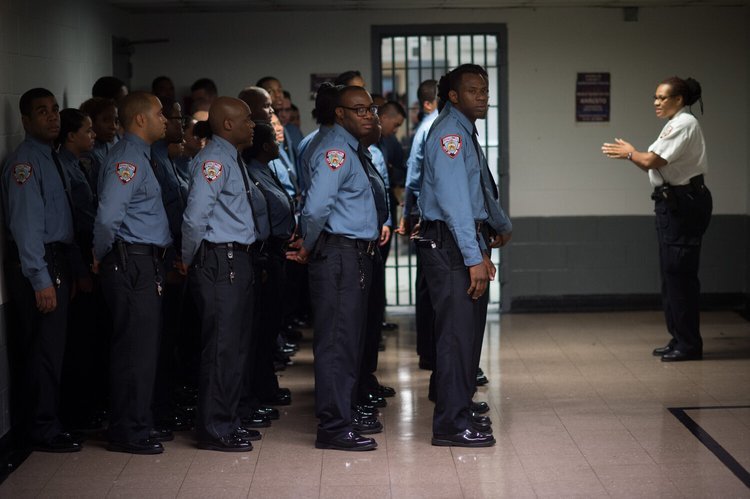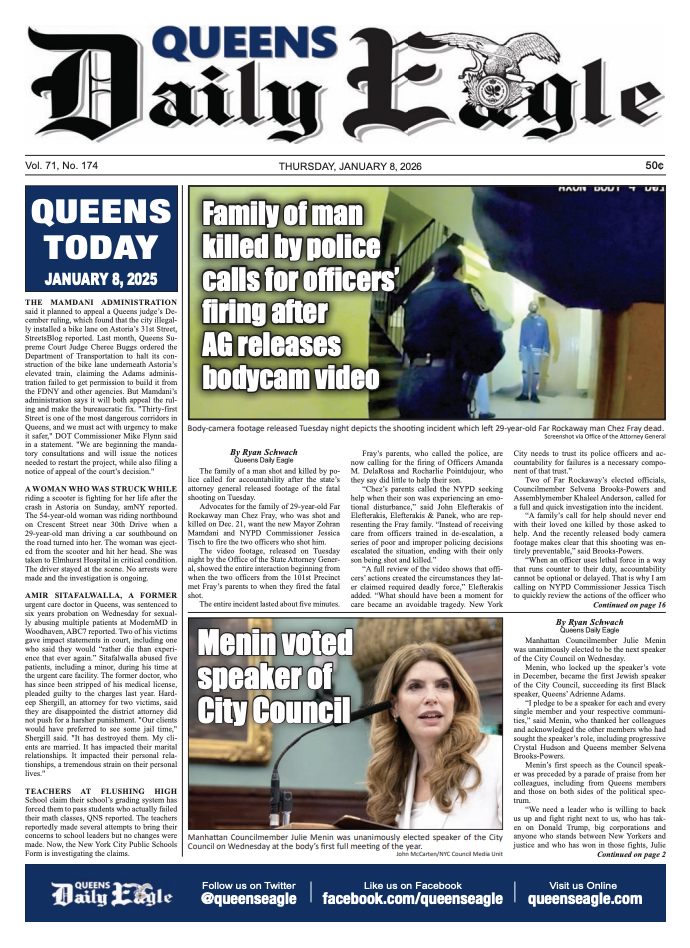Rikers staffing still a wreck: Federal Monitor
/The latest report from the Nunez Independent Monitor points to staffing shortages and mismanagement as key factors in Rikers Island’s unchanged crisis conditions. Photo via Michael Appleton/Mayoral Photography
By Rachel Vick
Another damning report on the conditions inside the Rikers Island jails was released last week, outlining pervasive pitfalls and mismanagement that has contributed to the continued crisis inside the city’s jail.
As of the report’s filing on March 16, officials from the Department of Correction and City Hall had not only failed to adequately address the issues repeatedly put forth by the independent oversight team, but pulled back their degree of cooperation and transparency since Mayor Eric Adams’ inauguration, the monitor said.
In addition to ongoing excessive staff absenteeism, the scathing report from the monitor noted four major problem areas: ineffective staff management, supervision, and deployment; poor security practices; inadequate management of incarcerated people; and limited and protracted discipline for staff misconduct.
“The first few months of 2022 have revealed the jails remain unstable and unsafe for both
inmates and staff. The volatility and instability in the jails is due, in no small part, to unacceptable levels of fear of harm by detainees and staff alike,” monitor Steve J. Martin wrote.
“Despite initial hopes… the Department’s attempts to implement the required remedial steps have faltered and, in some instances, regressed,” the monitor added.
The report says that Rikers’ “dysfunctional practices [are] unlike any jail system with which the Monitoring Team has [overseen].”
Though a large number of Correction Officers have returned to their posts after a year of massive staff absenteeism, the amount was not enough to combat the rising rates of violence, according to the report.
With more than 2,000 uniformed staff members still unavailable — 30.24 percent of staff as of Jan. 26 — the number of absent staff is slightly lower than the 28.6 percent unavailable upon the monitor’s first filing in Aug. 2021.
The agency suspended about 30 staff for sick leave abuse and one staff member who went AWOL in the first two months of 2022, according to the report. However, they added that based on the available data, the city and DOC have yet to address the high rates of absent staff.
Additionally, supervisors have been unable to lead a change towards deployment efficiency “due to lack of expertise and skills, limitations in their numbers compared with the line staff they oversee, and illogical deployment practices,” according to the monitor.
The report is the latest from the monitor appointed to oversee conditions on the island, and the first under Mayor Eric Adam’s and DOC’s new leadership in Commissioner Louis Molina. In addition to DOC firing a key point person for the team’s recommendations, the agency has cut back on direct contact, the monitor said.
“The Department’s approach to filter most information through the Legal Division inhibits the Monitoring Team’s access to information and hinders its efforts to provide factually accurate information to the Parties and the Court and to facilitate improvement,” Martin said.
Advocates piled on to the report’s recent findings and the DOC’s continued failure to address the factors found to exacerbate dangerous conditions at the infamous facility. Marvin Mayfield, director of organizing for Center for Community Alternatives, suggested putting the high cost of running the city jail into supporting a $1 billion investment in community-based violence intervention and supportive services.
“After years of tracking out-of-control staff brutality and widespread abuse and neglect in New York City jails, the latest monitor’s report finds violence and trauma behind bars continues unabated,” Mayfield said. “The push to gut bail reform, disguised as ‘tweaks,’ threatens to condemn more people to this hellscape, bringing chaos and heartbreak to Black and brown families, coercing guilty pleas, and making our communities less safe.”
Adams, a former police office and staunch supporter of the correctional officers union, came into office with a hard line on crime and incarceration. He has since outlined his support for amended bail reform in response to crime rates, which advocates like Mayfield say is counterintuitive to the goals to close Rikers by 2027.
Adams has also continued to delay the implementation of the Risk Management Accountability System, the city’s alternative to solitary confinement. The rollout of the new program was first delayed by an executive order from former Mayor Bill de Blasio last year. Adams has extended the order each week he has been in office.
The report was first to be released after the deadliest year for the jails in recent history, and just one day before the DOC had its second death of a person in custody of the year. George Pagan, 49, who was in custody at the Eric M. Taylor Center, died at Elmhurst Hospital on Thursday.
On Friday, an unidentified man died after being taken to a clinic inside the Eric M. Taylor Center, where he too was being held, becoming the third person to die in DOC custody in as many months this year, according to the DOC. The man had been in custody since Feb. 27.
An investigation into both deaths is ongoing.
“The report hits home for me and is deeply troubling,” Molina said in a statement to the Eagle. “I absolutely share the Monitor’s goals of safer and more humane jails. We need to do better, we must do better.”
“I was aware of the history of problems facing the department when I took office and we are moving forward as swiftly as possible to fix longstanding issues mentioned in the report,” he added. “These challenges will not be met overnight, but I am determined that this agency will meet them.”




